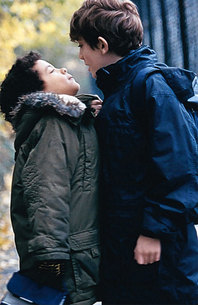Traditional BullyingTraditional Bullying happens in person and involves 2 actors: the bully and the victim.
In the 2008-2009 school year, 7,066,000 students ages 12-18 were bullied at school. This is roughly 28% of all students [7]. Traditional bullying utilizes aggression through physical and verbal threats or actions to a victim who cannot defend themselves [19]. There are 3 types/categories of traditional bullying: 1. Physical Bullying: physical actions towards the victim. This includes:
2. Harassment Bullying: verbal actions used to frighten or "break down" the victim. This includes:
3. Relational Bullying: Bullying that involves breaking the victims relationships with others. This includes:
Males typically physical bully someone while females tend to lean more towards the relational bullying. Popular bullying sites include:
Most places where children are bullied happens where there is a large group of students and where supervision is limited [19]. In order for actions to be considered bullying, they must be:
Bullying can have detrimental impacts on the victim with extreme cases leading to suicide [13]. Teachers and school officials have an obligation to inform officials if a serious criminal offense is committed. Most bullying crimes are prosecuted as:
|
Cyber BullyingIn the National Crime Victimization Survey done over the 2008-2009 school year, 1,521,000 students ages 12-18 reported being cyber bullied. This is roughly 6%. [7]
Cyber Bullying is becoming a problem in schools and government as technology advances [6]. Close to 90% of youth (12-17) are on the internet daily. [19] With the internet, cyber bullies can reach a large number of victims and they do not realize the threat of punishment. Bullying online can harass, threaten, and infringe on a victims personal life not only in the schools but in the comfort of their own home. Cyber bullying can fall under two categories: Synchronic and Asynchronic. Synchronic is "live" bullying. This type of bullying is instant, it happens when both the offender and victim are online at the same time. Synchronic bullying utilizes:
Asynchronic is when the bullying is delayed and the content is posted on the web permanently. Asynchronic bullying utilizes:
Cyber Bullying can take on 2 forms: Direct and Indirect. Direct Cyber Bullying is similar to Synchronic. Direct cyber bullying consists of messages sent from the bully to the victim. Indirect Cyber Bullying is similar to Asynchronic. Indirect cyber bullying consists of the bully using the help of others to attack the victim [19]. Examples of Cyber Bullying include:
There have been 8 terms coined describe the different types of cyber bullying. These terms are:
|


